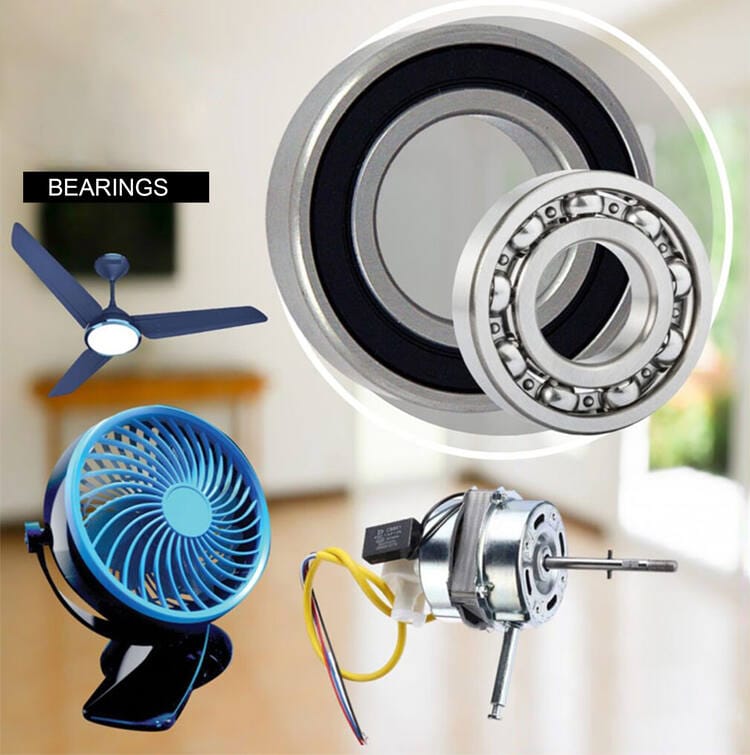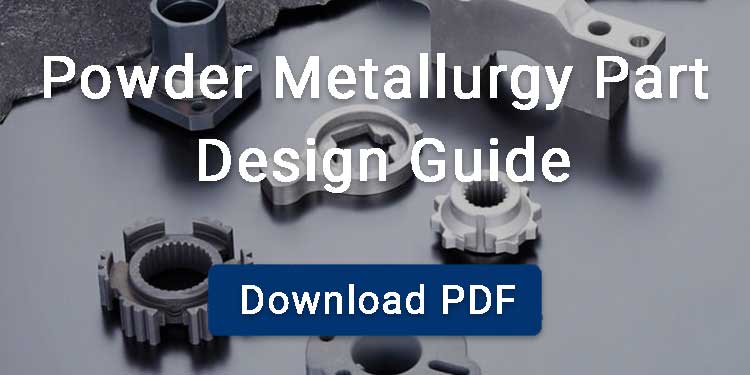Components manufactured through powder metallurgy (PM) show precise dimensions, high strength, and excellent wear resistance. The capability of powder metallurgy to produce components with complex shapes makes it ideal to produce components for home appliances. These include electric fans, motors, washing machines, and even coffee makers.
Contents
What are Powder Metallurgy Parts?
In the powder metallurgy process, mixed metal powder is compacted and sintered to get a near-net-shaped component. This method enables precise control over material composition, density, and microstructure, allowing the creation of parts with specific mechanical properties. A wide range of home appliance parts can be manufactured with this process by using different materials such as iron, steel, copper, and bronze.

Powder Metallurgy Parts in Home Appliances
Electric Fans
Powder metallurgy enables the production of high-precision and wear-resistant electric fan components that work reliably under rotational loads. Here are common sintered metal parts in electric fans:
Sintered bushings
Sintered bushings are manufactured using bronze or iron alloy metal powder and support motor shafts in an electric fan. Sintered oil-impregnated bushings are made by compacting metal powder and sintering it at high temperatures. Lubricant then fills the pores under vacuum or pressure, giving the bushings built-in self-lubricating properties. They offer low friction, quiet operation, long service life, and are maintenance-free.

Motor Parts
Motor parts of fans are also manufactured through powder metallurgy, including rotor cores and structural elements. The required dimensional accuracy and magnetic properties of these parts are achieved through controlled powder composition.
Transmission gears
The sintered transmission gears show high strength, smooth meshing, and reduced noise during operation. The consistent performance of these gears ensures stable speed regulation. As a result the operational lifespan of your fan extends.
Refrigerators
Compressor Valve Plate
In refrigerator, compressors valve plates are responsible for directing refrigerant gas flow between the suction and discharge sides. This ensures efficient compression and prevents backflow. Sintered valve plates offer precise flatness, controlled porosity for optimal sealing, and long-term reliability under repeated pressure cycles.

Pistons
Pistone is hidden in the reciprocating compressor of the refrigerator. The function of the piston is to move up and down inside the cylinder to compress low-pressure refrigerant vapor into high-pressure vapor. Due to this, the heat is transferred to the condenser.
Connecting Rod
Connecting rods in refrigerator compressors link the crankshaft to the piston, converting rotational motion into reciprocating movement. Manufacturing these rods by the sintering process enables them to bear continuous stress, impact loading, and lubrication challenges.
Air Conditioners
Compressor Flanges, Cylinders, and Gaskets.
PM helps to manufacture complex and customized flanges, cylinder liners, and gasket shapes with minimal machining and cost efficiency. In air conditioning compressors, flanges and cylinders are critical for maintaining structural integrity under high pressure. Whereas Gaskets provide essential sealing between mating surfaces to prevent refrigerant leaks.
Rotors and Stators
The rotor and stator assemblies in air conditioner motors (both fans and compressors) are foundational for electromagnetic performance and mechanical stability. These components require tight dimensional tolerances and uniform material structure, which is achieved by producing them through powder metallurgy.
Washing Machines
Spin Tube and Locking Tube
Spin tubes and locking tubes facilitate the transmission of rotational motion to the drum in automated washing machines. This transmission ensures effective agitation and spin cycles. These parts are manufactured using PM in order to improve product quality and cost-efficiency by reducing material waste, labor, management overhead, and total annual costs.
Gears and Bushings
Automatic washing machines contain multiple PM components, such as sintered gears and bushings. These are responsible for internal transmission mechanisms and mechanical motions in the machine. These sintered parts have precise tooth geometry and self-lubricating functionality via oil impregnation process. As a result, they contribute to the durable, quiet, and efficient operation of washing machines.
Racks
A seven-level rack, which is made using PM, is used in industrial washing machines. It is paired with a mating gear to create the agitator mechanism. Manufacturing racks using powder metallurgy can reduce costs and improve precision.
Coffer Maker
In coffee makers, sintered gears are used in grinding mechanisms and drive assemblies. These gears ensure smooth and consistent operation, contributing to long service life and reliable performance.
Meat Grinder Blade
Meat grinding blades must maintain sharp edges, resist wear, and withstand repeated impact against hard or fibrous food materials. Sintered metal manufacturing provides blades with uniform hardness and excellent wear resistance. The complex cutting geometry can be directly produced during manufacturing without the need for any secondary operation.
Heat Sinks and Thermal Plates
Thermal plates made from sintered aluminum or copper distribute heat evenly and prevent localized overheating in small appliances like toasters, sandwich makers, and compact ovens. That’s why these are manufactured using PM, which can produce high thermal conductivity components.
Pump Impellers
Water pumps in espresso machines, dishwashers, and certain blenders often use sintered metal impellers. These are manufactured using powder metallurgy as they must operate reliably under rotational stress while resisting corrosion and cavitation.



